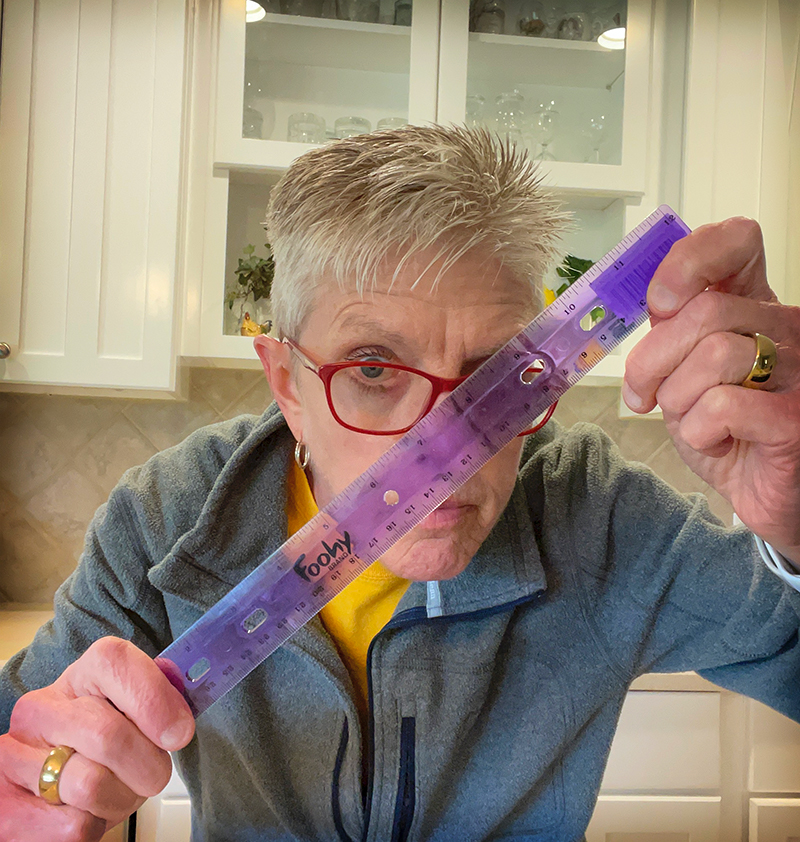We’ve all seen them before and might have noted the time of day. But a rainbow can be seen only in the morning or in the late afternoon. It is usually raining, just a little, when the sun comes out at the same time. But this all has to happen when the sun is 40 degrees or less above the horizon.
Angles.
Angles affect most aspects of our lives. Really.
We learn about angles in math class at an early age. The dictionary describes them as space (usually measured in degrees) between two intersecting lines (or surfaces) at the point where they meet. Even the geometric shape hints at their existence: triangle, those three angles put all together.
But then there is us and our views on life and everything in it. Depending on who we are and where we are standing, our perspective is pointing this way or that. At an angle.
We’ve heard it said so many times before when we speak about someone presenting his or her view. “What was his angle?”
Just like we need that special angle to see a rainbow, if we aren’t in the right place, at the right time, we will never see it. So it goes with people and life. They are unable to see what others can see because — for whatever reason — they are standing in the wrong place. And sometimes standing firmly.
It can be about anything, from politics, to religion, to life decisions about finance, or health, or even entertainment: our perspectives, our positions, our angles.
This can also reach the positive and the negative viewpoints in life. Someone’s position depends on many things, including every single bit of that person’s life experience. But it can also be genetic, too, I have learned.
I just read an article about a study conducted in Canada at the University of British Columbia. They have found that pessimists may be genetically predisposed to see the world darkly.
The study found that some people have a particular gene variant. This variant can cause them to see emotional events — especially negative ones — more vividly than people who don’t carry the gene.
There has been a recent raft of research acknowledging biology’s role in shaping a person’s perspective, positive or negative. And this study added further support.
From the article posted in Canada’s National Post:
”The UBC study adds to a growing body of work in the field. Scientists are really just beginning to figure out how these biological biases interact with a person’s life experience to make them see the world either positively or negatively, to feel anxious or at ease.”
Another angle, to our angles.
It struck me in a particularly personal way because I get anxious in many situations. Heck, I get anxious, just thinking about being anxious in a situation. Intellectually, I know that no harm will come to me ( hopefully ) and whatever the “thing” is will most likely be all right. But emotionally, I can’t hear that reasoning. I’m still uneasy inside, to say the least.
I have trouble seeing the rainbow, in that particular case.
As we go through our day and our lives, with our opinions, beliefs, personalities, and demeanors, we should try to remember that everyone is not standing quite in the same place as we are. And no matter how hard we try, we probably can’t get another single person on this earth to see the things that we do, in exactly the same manner, all the time.
That’s not to say that we don’t share extremely similar viewpoints with a lot of people. We do. That’s how we get political parties and religions. And garden clubs and Coney Island.
But the world is a big prism of color. And we each see a different strand of the light.
===========
“Oneness is not sameness.”
― Lois Farfel Stark
===========
“If someone can’t see from your perspective, don’t bend their neck.”
― Michael Bassey Johnson
===========
“Your perception of me, of life, of others … is always a reflection of something in you.”
― Brittany Burgunder
===========
The right angle?
